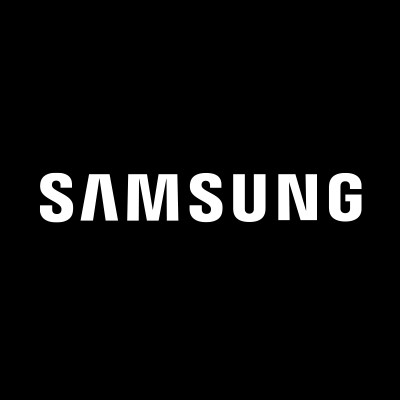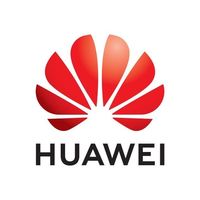Huawei's Mate XT: A Bold Move in the Smartphone Arena
September 10, 2024, 11:07 pm

Location: United States, California, San Francisco
Employees: 10001+
Founded date: 1938
Total raised: $6.4B
Huawei has made waves with the launch of its Mate XT, a tri-fold smartphone that bends the rules of design and functionality. This innovative device is not just a phone; it’s a statement. Priced at $2,800, the Mate XT aims to capture the attention of tech enthusiasts and challenge the dominance of Apple in the lucrative Chinese market.
The launch event, held in Shenzhen, was a spectacle. Just hours after Apple unveiled its latest iPhone, Huawei took the stage. The timing was no accident. Huawei is keen to steal the spotlight from its American rival. The Mate XT is a bold move, a three-way foldable phone that resembles an accordion. It opens up new possibilities, offering a unique form factor that has already garnered over 4 million pre-orders. This is no small feat, especially in a market where foldable phones are still finding their footing.
The global market for foldable phones is relatively small, with only about 4 million units shipped in the second quarter of 2024. Yet, Huawei has managed to secure a 27.5% share of this niche market, surpassing Samsung. In China, its dominance is even more pronounced, with a staggering 42% market share. This success comes despite the U.S. sanctions that have hampered Huawei's access to critical technology. The Mate XT is a testament to the company’s resilience and innovation.
But what makes the Mate XT stand out? It boasts a 10.2-inch display and is touted as the world’s slimmest foldable phone at just 3.6mm wide. The device also features an AI assistant capable of text summarization, translation, and image editing. These AI capabilities are powered by Huawei's in-house Kylin chips, showcasing the company’s commitment to self-reliance in technology.
However, the hefty price tag raises eyebrows. At $2,800, the Mate XT is more than twice the starting price of the iPhone 16 Pro Max. This high cost may limit its appeal to a broader audience. Analysts suggest that while the Mate XT is a marvel of engineering, it may not significantly impact the sales of Apple or Samsung. Instead, it serves as a symbol of Huawei's technological prowess and ambition.
Consumer sentiment plays a crucial role in this narrative. Many potential buyers are questioning the value of a smartphone that lacks robust AI features. Comments on social media reflect this skepticism. Some users wonder why they should invest in a device that doesn’t leverage AI to its fullest potential. This sentiment could pose a challenge for Huawei as it seeks to position the Mate XT as a must-have gadget.
The foldable smartphone market is growing, with a year-on-year increase of 57%. Yet, it still represents only 1.3% of the overall smartphone market. This indicates that while there is interest in foldable devices, widespread adoption is still a distant goal. Consumers remain hesitant, often due to high prices and concerns about durability. Issues like screen wrinkles and hinge reliability are significant barriers to entry.
Huawei's strategy appears to be twofold. First, it aims to solidify its position in the foldable market. Second, it seeks to challenge Apple’s dominance in China. The latter is particularly crucial, as Apple’s market share has dwindled, dropping from third to sixth place in the Chinese smartphone landscape. This shift highlights the changing dynamics of consumer preferences and the growing acceptance of domestic brands.
Despite the challenges, Huawei's recent successes cannot be overlooked. The company has made a remarkable comeback in the high-end smartphone segment, largely due to its ability to produce devices powered by domestically-made chips. The Mate 60 Pro, released last year, surprised analysts and U.S. officials alike, marking a significant milestone for the company.
As the Mate XT prepares for its September 20 launch, the stakes are high. Huawei is not just launching a product; it’s making a statement. The device symbolizes a new era of innovation and competition in the smartphone market. It challenges the status quo and invites consumers to rethink their choices.
In conclusion, the Mate XT is more than a smartphone; it’s a bold declaration of Huawei's intent to lead in a rapidly evolving tech landscape. The combination of innovative design, advanced AI features, and strategic timing positions it as a formidable contender against Apple. Whether it will achieve mass-market success remains to be seen, but one thing is clear: Huawei is not backing down. The battle for smartphone supremacy is far from over, and the Mate XT is just the beginning.
The launch event, held in Shenzhen, was a spectacle. Just hours after Apple unveiled its latest iPhone, Huawei took the stage. The timing was no accident. Huawei is keen to steal the spotlight from its American rival. The Mate XT is a bold move, a three-way foldable phone that resembles an accordion. It opens up new possibilities, offering a unique form factor that has already garnered over 4 million pre-orders. This is no small feat, especially in a market where foldable phones are still finding their footing.
The global market for foldable phones is relatively small, with only about 4 million units shipped in the second quarter of 2024. Yet, Huawei has managed to secure a 27.5% share of this niche market, surpassing Samsung. In China, its dominance is even more pronounced, with a staggering 42% market share. This success comes despite the U.S. sanctions that have hampered Huawei's access to critical technology. The Mate XT is a testament to the company’s resilience and innovation.
But what makes the Mate XT stand out? It boasts a 10.2-inch display and is touted as the world’s slimmest foldable phone at just 3.6mm wide. The device also features an AI assistant capable of text summarization, translation, and image editing. These AI capabilities are powered by Huawei's in-house Kylin chips, showcasing the company’s commitment to self-reliance in technology.
However, the hefty price tag raises eyebrows. At $2,800, the Mate XT is more than twice the starting price of the iPhone 16 Pro Max. This high cost may limit its appeal to a broader audience. Analysts suggest that while the Mate XT is a marvel of engineering, it may not significantly impact the sales of Apple or Samsung. Instead, it serves as a symbol of Huawei's technological prowess and ambition.
Consumer sentiment plays a crucial role in this narrative. Many potential buyers are questioning the value of a smartphone that lacks robust AI features. Comments on social media reflect this skepticism. Some users wonder why they should invest in a device that doesn’t leverage AI to its fullest potential. This sentiment could pose a challenge for Huawei as it seeks to position the Mate XT as a must-have gadget.
The foldable smartphone market is growing, with a year-on-year increase of 57%. Yet, it still represents only 1.3% of the overall smartphone market. This indicates that while there is interest in foldable devices, widespread adoption is still a distant goal. Consumers remain hesitant, often due to high prices and concerns about durability. Issues like screen wrinkles and hinge reliability are significant barriers to entry.
Huawei's strategy appears to be twofold. First, it aims to solidify its position in the foldable market. Second, it seeks to challenge Apple’s dominance in China. The latter is particularly crucial, as Apple’s market share has dwindled, dropping from third to sixth place in the Chinese smartphone landscape. This shift highlights the changing dynamics of consumer preferences and the growing acceptance of domestic brands.
Despite the challenges, Huawei's recent successes cannot be overlooked. The company has made a remarkable comeback in the high-end smartphone segment, largely due to its ability to produce devices powered by domestically-made chips. The Mate 60 Pro, released last year, surprised analysts and U.S. officials alike, marking a significant milestone for the company.
As the Mate XT prepares for its September 20 launch, the stakes are high. Huawei is not just launching a product; it’s making a statement. The device symbolizes a new era of innovation and competition in the smartphone market. It challenges the status quo and invites consumers to rethink their choices.
In conclusion, the Mate XT is more than a smartphone; it’s a bold declaration of Huawei's intent to lead in a rapidly evolving tech landscape. The combination of innovative design, advanced AI features, and strategic timing positions it as a formidable contender against Apple. Whether it will achieve mass-market success remains to be seen, but one thing is clear: Huawei is not backing down. The battle for smartphone supremacy is far from over, and the Mate XT is just the beginning.


